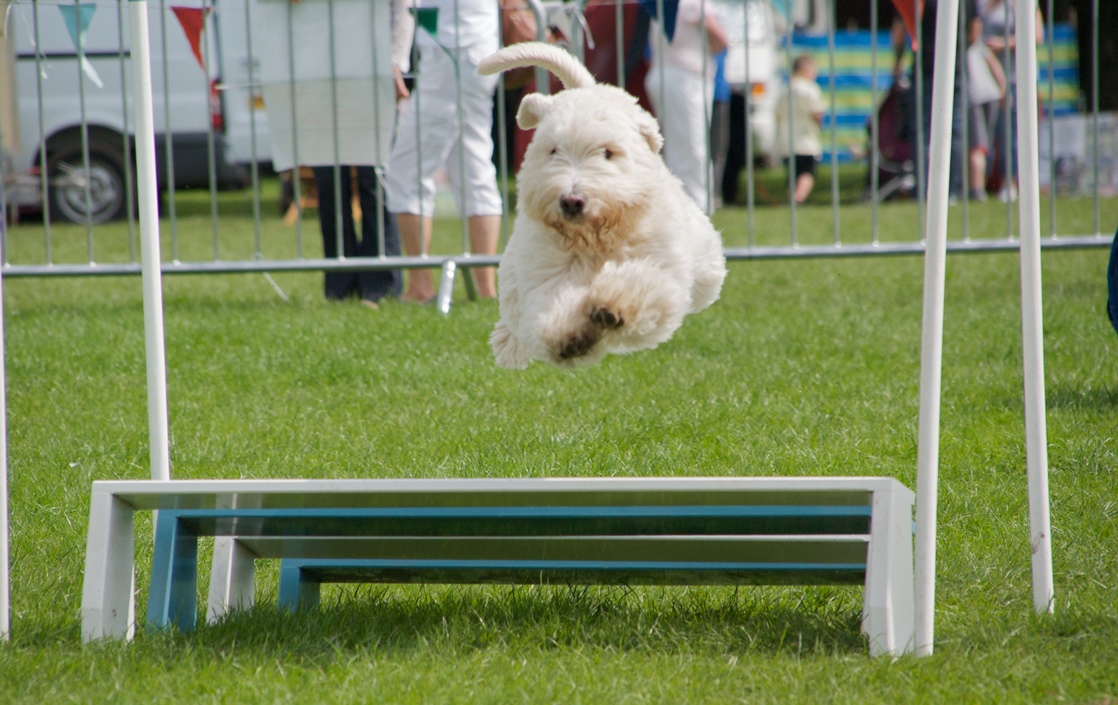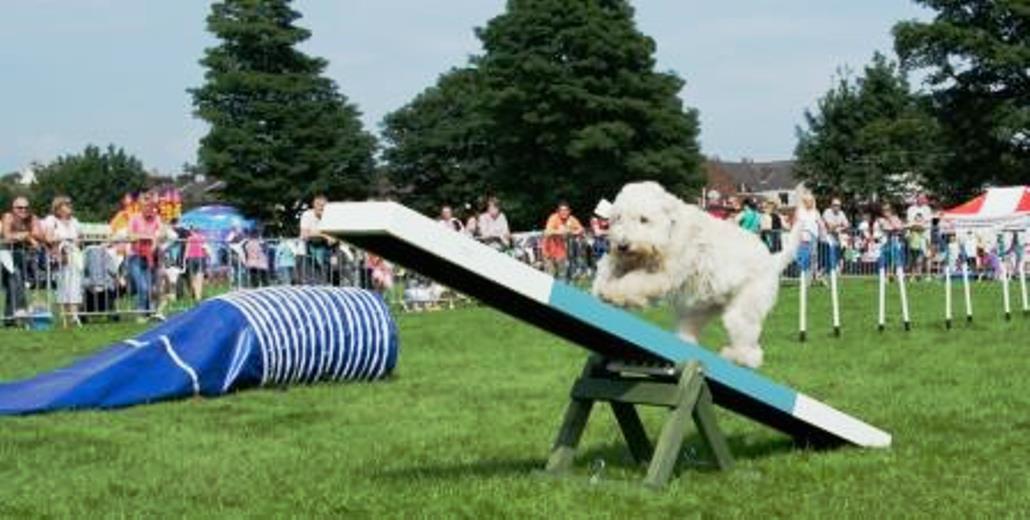Agility

As the Soft-Coated Wheaten Terrier is such a high energy dog he may really enjoy trying out Agility. It’s fun, people are friendly, and it keeps you and your dog in good shape.
Agility is probably best described as an obstacle course for dogs. A series of different pieces of equipment, such as jumps, a see-saws, A-frame, dog-walk, tunnels and weave poles, etc., are arranged as a course, and the dog has to negotiate each piece without fault, and in order, with you running the course with him (hopefully not alongside as some distance control is part of the training and he will certainly be able to run faster than you!).
If you have ever watched the Agility coverage of Crufts, you will know just how exciting this event can be, for those taking part, and the spectators.
There aren’t many Wheaten Terriers competing at higher level Agility events, and because of their nature, they do need to learn best techniques from the beginning, as they have a tendency to leap too high rather than have a conventional jumping action. It is best to seek some advice on this before learning bad habits!
Just like Breed Shows, Agility Shows take place all over the UK and most people have regular shows relatively nearby. There are Kennel Club Open shows (some with Championship Classes), UK Agility shows, Unaffiliated (independent) shows etc., all of which are held country wide.
It is important for you and your dog to be well prepared before you take part in any Agility event. You will need to have done some training at an Agility Club. The preparation and training you will need to do will take a little a while to master if both you and your dog are new to the sport.
Before you begin specific Agility training, you must ensure that you have effective control of your dog. This is best achieved by taking your pup to a training class and continuing obedience training throughout the first year – preferably with a club that also does Agility training once your dog is old enough.
Agility training exercises, and all competition work, is off-lead. When you are training, your dog is always kept on lead unless it is his turn to complete an exercise so that he does not interfere with other dogs. Your dog needs to be focused on you, have a reliable wait and recall, and be well behaved with, and preferably be able to ignore, other dogs. It is important that your dog is focused on you and that you are more exciting than the dog on the other side of the field!
For your dog’s health and safety, the Kennel Club and all Agility organisations insist that dogs do not start training on Agility equipment until they are a year old. There are, however, plenty of exercises that can be done that will help with future agility training, for example, learning left and right turns, learning to send away to a marker, learning where their back feet are etc. You have plenty of time in the first year to do some general obedience training and make sure your dog is under control at all times. Your dog should be used to playing with you and not over focused on other dogs. Collies are by far the most numerous breed at Agility events and many are prone to lunge at anything moving, and so it is important that you give other dogs and their owners space and do not encourage play with other dogs at Agility training.
Good preparation for Agility means plenty of regular practice. Supervised training at an Agility class is very important, especially when you are starting out.
If you don’t know of any Agility classes near you, the Kennel Club’s Find a Club facility on their website may be a starting point, but also look online at ‘Agility net’ and ‘Agility Shows to enter’, which will show you which organisations hold shows within easy reach of you.




